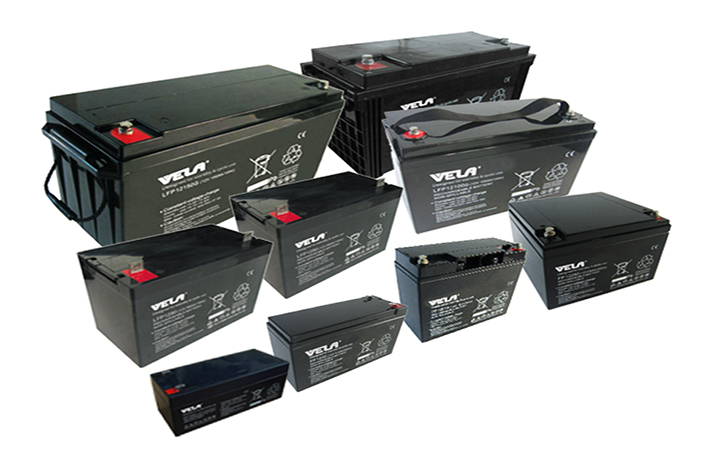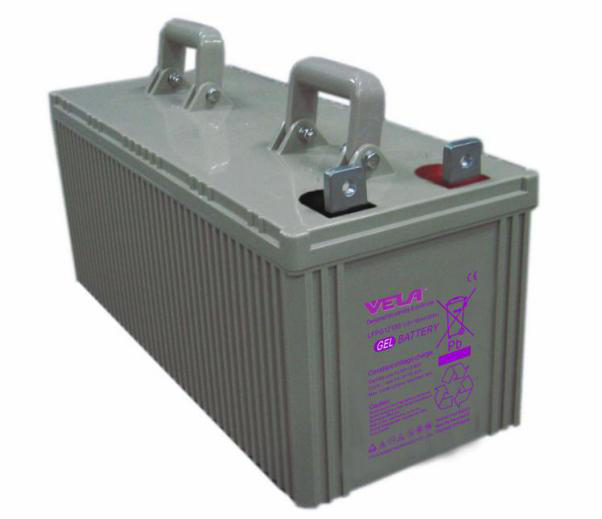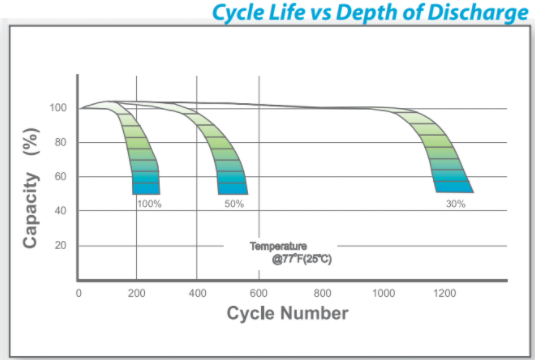
1.What is AGM battery ?
AGM stands for absorbed glass mat, which is one of the main physical differences between AGM batteries and traditional flooded lead-acid batteries used in cars. Recently, technological advances have made them usable for solar-plus-storage setups as well.We’ll spare you from the extensive details of everything that separates these two battery chemistries, but it’s important to know that the absorbed glass mat technology allows for more power to be packed into a lead-acid battery housing.
 2.How does the AGM battery work ?
Chemically speaking, AGM batteries release energy by breaking apart oxygen and hydrogen molecules. When storing energy, these batteries recombine the oxygen and hydrogen in their cells, which is why AGM batteries are also a member of the “recombinant” battery family.
3.Compared with gel battery,AGM battery are more compatible with solar systems.
AGM Batteries unlike gel solar batteries, AGM cells use the same charging voltage as flooded batteries and are more compatible with solar electricity systems. This means they can be used in combination with flooded cells, though this setup is not recommended as it may degrade battery life.
2.How does the AGM battery work ?
Chemically speaking, AGM batteries release energy by breaking apart oxygen and hydrogen molecules. When storing energy, these batteries recombine the oxygen and hydrogen in their cells, which is why AGM batteries are also a member of the “recombinant” battery family.
3.Compared with gel battery,AGM battery are more compatible with solar systems.
AGM Batteries unlike gel solar batteries, AGM cells use the same charging voltage as flooded batteries and are more compatible with solar electricity systems. This means they can be used in combination with flooded cells, though this setup is not recommended as it may degrade battery life.
 4.Why AGM battery are more compatible with solar systems ?
There are 3 major elements that account for AGM battery is better used for solar systems. Higher cycle life rating, capable at a lower temperature and higher discharges rate.
CYCLE LIFE
The cycle life of the battery is dependent on the manufacturer and battery model. As an example: a Deka 8G Gel battery has a cycle life of approximately 1000 cycles to 50% Depth of Discharge (DOD), whereas their 8A AGM battery only has 500 cycles to 50% DOD. Compare this to the Concorde Sun X tender AGM battery, which is rated to 1000 cycles to 50% DOD. Universal Power Group (UPG) Gel and AGM batteries are both rated for 500 cycles to 50% DOD. In backup power Uninterruptible Power Supply (UPS) applications this is an inconsequential difference, as the battery is almost always floating at a full state of charge and may only cycle a few times a year. However, in solar power system applications, batteries are cycled to some depth of discharge daily, so a higher battery cycle life rating is beneficial.
4.Why AGM battery are more compatible with solar systems ?
There are 3 major elements that account for AGM battery is better used for solar systems. Higher cycle life rating, capable at a lower temperature and higher discharges rate.
CYCLE LIFE
The cycle life of the battery is dependent on the manufacturer and battery model. As an example: a Deka 8G Gel battery has a cycle life of approximately 1000 cycles to 50% Depth of Discharge (DOD), whereas their 8A AGM battery only has 500 cycles to 50% DOD. Compare this to the Concorde Sun X tender AGM battery, which is rated to 1000 cycles to 50% DOD. Universal Power Group (UPG) Gel and AGM batteries are both rated for 500 cycles to 50% DOD. In backup power Uninterruptible Power Supply (UPS) applications this is an inconsequential difference, as the battery is almost always floating at a full state of charge and may only cycle a few times a year. However, in solar power system applications, batteries are cycled to some depth of discharge daily, so a higher battery cycle life rating is beneficial.
 TEMPERATURE
Most manufacturers agree that AGM batteries operate better in colder climates (below 32°F [0°C]). While it is true that many AGM batteries are able to deliver a higher percentage of rated capacity at lower temperature, Gel batteries are quite capable at lower temperature and many are rated to operate at temperatures as low as -76°F (-60°C). Therefore, what’s important is to size the battery appropriately so it can deliver the required amount of energy while operating at lower temperature and to ensure the electrolyte does not freeze.
DISCHARGE RATES
Generally, AGM batteries allow higher discharge rates than Gel batteries. Manufacturers of AGM batteries frequently provide Cold Cranking Amps (CCA) ratings on battery spec sheets. The CCA rating is applicable to powering high current motors to start engines and is not applicable in most solar or UPS applications. Although some solar systems may start motor loads and other surge loads, these surge loads are typically inconsequential to selection of the battery technology.
5.AGM batteries have been a good choice for solar system.
In recent years, deep-cycle AGM batteries have become available on the market. Like other deep-cycle lead-acid battery options, deep-cycle AGM products can be a solid choice to pair with a solar panel system in select cases. AGM batteries are particularly useful for small, off-grid solar systems. For example, a remote cabin with low energy demand and a small system on the roof may be the perfect candidate for an AGM battery bank. No maintenance is needed, and the relatively low upfront cost of lead-acid batteries in general makes AGM batteries ideal for these smaller, off-grid setups.
TEMPERATURE
Most manufacturers agree that AGM batteries operate better in colder climates (below 32°F [0°C]). While it is true that many AGM batteries are able to deliver a higher percentage of rated capacity at lower temperature, Gel batteries are quite capable at lower temperature and many are rated to operate at temperatures as low as -76°F (-60°C). Therefore, what’s important is to size the battery appropriately so it can deliver the required amount of energy while operating at lower temperature and to ensure the electrolyte does not freeze.
DISCHARGE RATES
Generally, AGM batteries allow higher discharge rates than Gel batteries. Manufacturers of AGM batteries frequently provide Cold Cranking Amps (CCA) ratings on battery spec sheets. The CCA rating is applicable to powering high current motors to start engines and is not applicable in most solar or UPS applications. Although some solar systems may start motor loads and other surge loads, these surge loads are typically inconsequential to selection of the battery technology.
5.AGM batteries have been a good choice for solar system.
In recent years, deep-cycle AGM batteries have become available on the market. Like other deep-cycle lead-acid battery options, deep-cycle AGM products can be a solid choice to pair with a solar panel system in select cases. AGM batteries are particularly useful for small, off-grid solar systems. For example, a remote cabin with low energy demand and a small system on the roof may be the perfect candidate for an AGM battery bank. No maintenance is needed, and the relatively low upfront cost of lead-acid batteries in general makes AGM batteries ideal for these smaller, off-grid setups.
 2.How does the AGM battery work ?
Chemically speaking, AGM batteries release energy by breaking apart oxygen and hydrogen molecules. When storing energy, these batteries recombine the oxygen and hydrogen in their cells, which is why AGM batteries are also a member of the “recombinant” battery family.
3.Compared with gel battery,AGM battery are more compatible with solar systems.
AGM Batteries unlike gel solar batteries, AGM cells use the same charging voltage as flooded batteries and are more compatible with solar electricity systems. This means they can be used in combination with flooded cells, though this setup is not recommended as it may degrade battery life.
2.How does the AGM battery work ?
Chemically speaking, AGM batteries release energy by breaking apart oxygen and hydrogen molecules. When storing energy, these batteries recombine the oxygen and hydrogen in their cells, which is why AGM batteries are also a member of the “recombinant” battery family.
3.Compared with gel battery,AGM battery are more compatible with solar systems.
AGM Batteries unlike gel solar batteries, AGM cells use the same charging voltage as flooded batteries and are more compatible with solar electricity systems. This means they can be used in combination with flooded cells, though this setup is not recommended as it may degrade battery life.
 4.Why AGM battery are more compatible with solar systems ?
There are 3 major elements that account for AGM battery is better used for solar systems. Higher cycle life rating, capable at a lower temperature and higher discharges rate.
CYCLE LIFE
The cycle life of the battery is dependent on the manufacturer and battery model. As an example: a Deka 8G Gel battery has a cycle life of approximately 1000 cycles to 50% Depth of Discharge (DOD), whereas their 8A AGM battery only has 500 cycles to 50% DOD. Compare this to the Concorde Sun X tender AGM battery, which is rated to 1000 cycles to 50% DOD. Universal Power Group (UPG) Gel and AGM batteries are both rated for 500 cycles to 50% DOD. In backup power Uninterruptible Power Supply (UPS) applications this is an inconsequential difference, as the battery is almost always floating at a full state of charge and may only cycle a few times a year. However, in solar power system applications, batteries are cycled to some depth of discharge daily, so a higher battery cycle life rating is beneficial.
4.Why AGM battery are more compatible with solar systems ?
There are 3 major elements that account for AGM battery is better used for solar systems. Higher cycle life rating, capable at a lower temperature and higher discharges rate.
CYCLE LIFE
The cycle life of the battery is dependent on the manufacturer and battery model. As an example: a Deka 8G Gel battery has a cycle life of approximately 1000 cycles to 50% Depth of Discharge (DOD), whereas their 8A AGM battery only has 500 cycles to 50% DOD. Compare this to the Concorde Sun X tender AGM battery, which is rated to 1000 cycles to 50% DOD. Universal Power Group (UPG) Gel and AGM batteries are both rated for 500 cycles to 50% DOD. In backup power Uninterruptible Power Supply (UPS) applications this is an inconsequential difference, as the battery is almost always floating at a full state of charge and may only cycle a few times a year. However, in solar power system applications, batteries are cycled to some depth of discharge daily, so a higher battery cycle life rating is beneficial.
 TEMPERATURE
Most manufacturers agree that AGM batteries operate better in colder climates (below 32°F [0°C]). While it is true that many AGM batteries are able to deliver a higher percentage of rated capacity at lower temperature, Gel batteries are quite capable at lower temperature and many are rated to operate at temperatures as low as -76°F (-60°C). Therefore, what’s important is to size the battery appropriately so it can deliver the required amount of energy while operating at lower temperature and to ensure the electrolyte does not freeze.
DISCHARGE RATES
Generally, AGM batteries allow higher discharge rates than Gel batteries. Manufacturers of AGM batteries frequently provide Cold Cranking Amps (CCA) ratings on battery spec sheets. The CCA rating is applicable to powering high current motors to start engines and is not applicable in most solar or UPS applications. Although some solar systems may start motor loads and other surge loads, these surge loads are typically inconsequential to selection of the battery technology.
5.AGM batteries have been a good choice for solar system.
In recent years, deep-cycle AGM batteries have become available on the market. Like other deep-cycle lead-acid battery options, deep-cycle AGM products can be a solid choice to pair with a solar panel system in select cases. AGM batteries are particularly useful for small, off-grid solar systems. For example, a remote cabin with low energy demand and a small system on the roof may be the perfect candidate for an AGM battery bank. No maintenance is needed, and the relatively low upfront cost of lead-acid batteries in general makes AGM batteries ideal for these smaller, off-grid setups.
TEMPERATURE
Most manufacturers agree that AGM batteries operate better in colder climates (below 32°F [0°C]). While it is true that many AGM batteries are able to deliver a higher percentage of rated capacity at lower temperature, Gel batteries are quite capable at lower temperature and many are rated to operate at temperatures as low as -76°F (-60°C). Therefore, what’s important is to size the battery appropriately so it can deliver the required amount of energy while operating at lower temperature and to ensure the electrolyte does not freeze.
DISCHARGE RATES
Generally, AGM batteries allow higher discharge rates than Gel batteries. Manufacturers of AGM batteries frequently provide Cold Cranking Amps (CCA) ratings on battery spec sheets. The CCA rating is applicable to powering high current motors to start engines and is not applicable in most solar or UPS applications. Although some solar systems may start motor loads and other surge loads, these surge loads are typically inconsequential to selection of the battery technology.
5.AGM batteries have been a good choice for solar system.
In recent years, deep-cycle AGM batteries have become available on the market. Like other deep-cycle lead-acid battery options, deep-cycle AGM products can be a solid choice to pair with a solar panel system in select cases. AGM batteries are particularly useful for small, off-grid solar systems. For example, a remote cabin with low energy demand and a small system on the roof may be the perfect candidate for an AGM battery bank. No maintenance is needed, and the relatively low upfront cost of lead-acid batteries in general makes AGM batteries ideal for these smaller, off-grid setups. 


